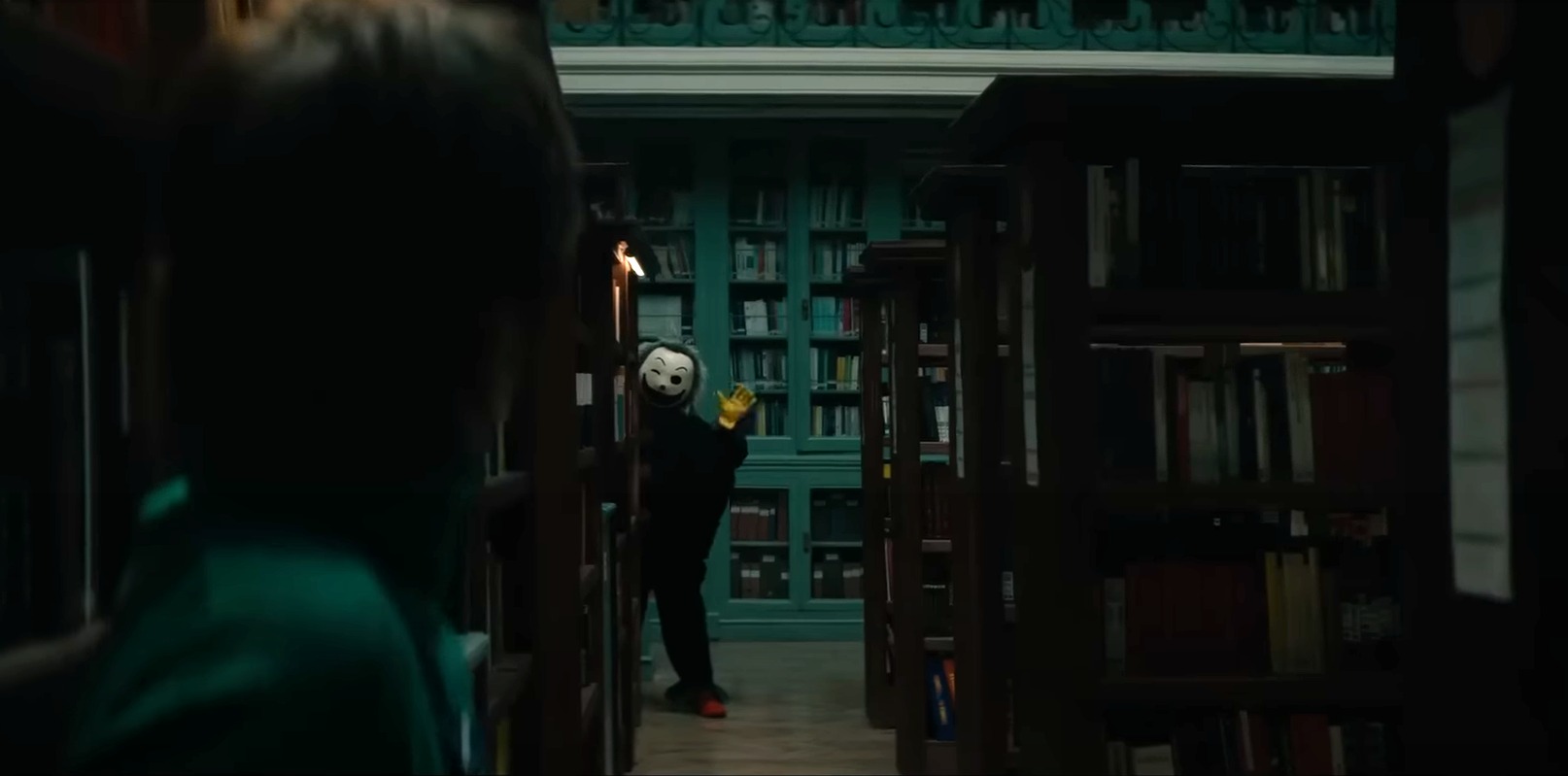Movies
‘Killer Book Club’ Review – Netflix’s Spanish Slasher Is a Pale Imitation of ‘Scream’

Carlos Alonso Ojea’s Killer Book Club doesn’t hide its intentions to remix Wes Craven and Kevin Williamson’s Scream — you’ll see both Scream and It referenced by name in the Netflix synopsis. The problem is, over two decades later, who hasn’t attempted to bottle that meta-slasher magic anew? Tyler MacIntyre’s Tragedy Girls and Scott Glosserman’s Behind the Mask: The Rise of Leslie Vernon thrive in a post-Scream world by creatively spinning meta-hilarious screenplays into uncharted territories, a lesson Killer Book Club doesn’t learn. Writer Carlos García Miranda does Scream but worse, foolishly begging for comparisons to a 90s horror classic because subverting expectations requires more labor versus copying someone else’s homework.
The story centers around aspiring best-selling author Ángela (Veki Velilla) and her misfit book club. They meet in an afterthought hangout den out of their school’s public eye, discussing serial killers and ghost stories. When Ángela has an unfortunate encounter with a professor after hours, the club comes to her aid with a revenge plan — that goes horribly awry. Everyone’s now an accomplice, sharing a dreadful secret like in I Know What You Did Last Summer. Only this time, it’s not a raincoat-wearing figure with a metal hook, but a psychopath in a clown mask picking off the book club members one at a time.
Visually, Killer Book Club sells itself as a vastly more engaging experience than the screenplay can deliver. Colorization is rich, as emerald-colored eyes glisten when contrasted against crimson blood pooling around a victim’s head. The twisted Jack in the Box mascot-lookin’ killer has a peculiar CarnEvil unease, despite wearing a cartoonish costume that isn’t scarier than Pennywise’s big toe. Cinematographer Pablo Diez displays keen vision when framing graphic death sequences when statues of Don Quixote impale poor souls, and also attentive spatial awareness that pulls double duty to keep the film’s whodunnit afoot. Killer Book Club is a polished exterior horror affair from firetruck red lighting filters that emanate danger to slick on-campus production designs that feel CW-approved, proving Ojea can execute on technical merits.
Unfortunately, the story behind Killer Book Club feels more like an inorganic vanity project to see how close the production can replicate Scream without copyright infringement. Scenes where Ángela’s classmates explain horror tropes to the audience feel know-it-all, while the film’s serial-slashing mystery isn’t all that mysterious. Scream rewrote the horror genre’s trajectory and paved the way for further innovation — but also feeble mimicry like Killer Book Club. Miranda’s story takes the “if it ain’t broke, don’t fix it” approach by fitting new architecture and characters atop 90s and 00s slasher blueprints, without revitalizing concepts that have lost their new-car smell. That we’ve seen this story before isn’t an immediate sin — it’s that we’ve seen this story done markedly better.

There’s such promise when the killer hijacks the club’s group chat and starts previewing their untimely fates as chapters in an unreleased novel. Everyone gets archetypal nicknames like “The Influencer” or “The Emo,” preparing us for subversions that play against rules that have become unbreakable in slasher lore — which never happens. Killer Book Club creates an environment where unpredictability can blossom, but only nurtures an unsavory try-hard attitude that whiffs in the film’s third act. Ojea and Miranda frequently choose the least spectacular route for Killer Book Club, especially considering how the blatantly recycled narrative feels off-axis from the very first death scene. It’s one of those slashers with hip and sassy dialogue that punches down at horror literature and cinema to prove its edge, which only highlights the ineffective melding of suspense and comedy in this wildly uneven disappointment.
To be clear, I’m not arguing that every horror release needs to shatter our concept of the genre’s capabilities. I’m arguing that if you’re going to challenge a throne built by an icon — in this case Craven — you better come correct. Killer Book Club does not, and squanders what could have been a zippy meta-slasher that incorporates writer’s envy, social media trends, and heaping dollops of red, juicy blood. What’s here never comes together as book club besties turn on each other when a masked maniac attacks, despite set-dressing the part. Underneath is just another shallow Scream and I Know What You Did Last Summer wannabe that struggles to maintain its own establishing rules, no better nor worse than middle-of-the-pack anonymity.


Movies
‘Kraven the Hunter’ Movie Now Releasing in December 2024

Sony returns to their own Marvel universe with the upcoming Kraven the Hunter, which has been bumped all over the release schedule. This week, it’s been bumped once more.
There was a time when Sony was going to unleash Kraven in theaters in October 2023, but the film was then bumped to August 2024. It’ll now release on December 13, 2024.
Kraven the Hunter will be the very first Marvel movie from Sony to be released into theaters with an “R” rating, with lots of bloody violence being promised.
Aaron Taylor-Johnson stars as the title character, Marvel’s ultimate predator.
“Kraven the Hunter is the visceral story about how and why one of Marvel’s most iconic villains came to be. Set before his notorious vendetta with Spider-Man, Aaron Taylor-Johnson stars as the titular character in the R-rated film.”
Ariana DeBose will play Calypso in the upcoming Kraven the Hunter movie.
Christopher Abbott (Possessor) is playing The Foreigner, with Levi Miller (Better Watch Out) also on board. Alessandro Nivola (The Many Saints of Newark) will play another villain, but character details are under wraps. Russell Crowe and Fred Hechinger also star.
J.C. Chandor (A Most Violent Year) is directing Kraven the Hunter.
The screenplay was written by Art Marcum & Matt Holloway and Richard Wenk.













You must be logged in to post a comment.